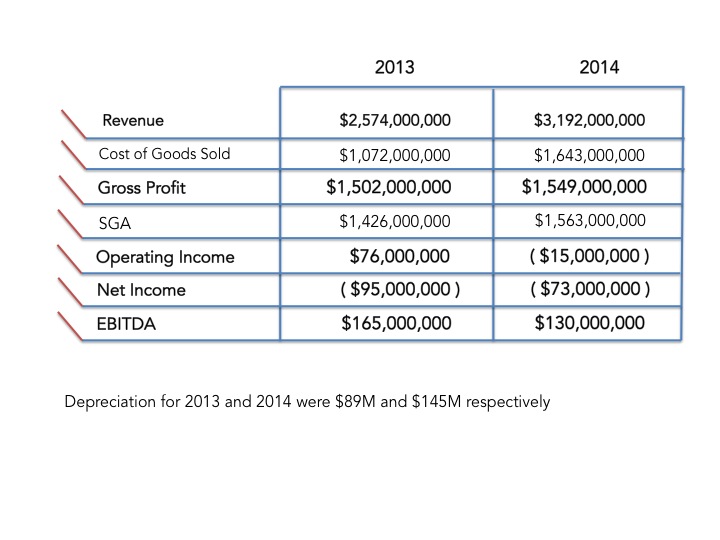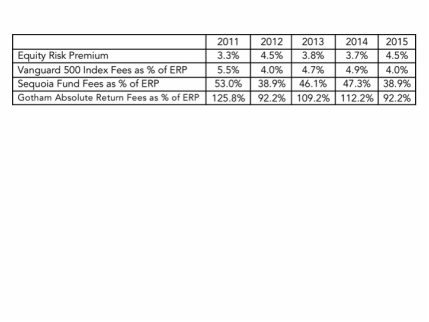The recent news surrounding Valeant (VRX) and Turing Pharmaceuticals have many investors wondering - much like Professor Coghill - whether the biopharma is in the midst of a great crisis or alternatively all of this noise is of “no importance”.
It would certainly seem the past several months have seen a distinct deflation in one segment of the BioPharma market. The performance of the SPDR S&P Biotech ETF (XBI) has provides an overview of the wreckage in the biotech sector in the past year – down 60% in the last year. Its top five holdings have demonstrated the volatility of the space.
Five Prime: +128%
Orexigen: -54%
Juno Therapeutics: +52%
Dyax: +165%
Infinity Pharmaceuticals: -46%
But we should remember all this Stürm and Drang has been relatively isolated in the Biotech space. Is the shoe going to drop on the larger integrated BioPharmas of the world? Before investors make investment decisions in the space, they should take some issues into consideration.
PE BioPharma and Integrated BioPharma
Perhaps the largest factor in investing in the BioPharma space is making the distinction between what I refer to as PE BioPharma and Integrated BioPharma. PE BioPharma are smaller private equity backed firms that operate on the idea of either developing a single molecule/compound or are publicly traded companies that adopt the “asset light” model made popular by Fred Hassan and/or Valeant. These companies (particularly the latter) have a tendency to veer far from the traditional business model. They generally shed employees, infrastructure such as overseas facilities, and research and development. They see themselves more as IP and distribution companies. Integrated BioPharma can include what we used to refer to as both biotechnology and the larger pharmaceuticals. These are companies that use the more traditional sales/promotional models and spend significant dollars on research and development (usually through a strategic agreement with the larger CROs). I’m aware this paints the industry with a very wide brush, but I think for investors it’s one of the first real investment decisions that need to be made.
Industry Characteristics
In addition, there are some salient facts about the BioPharma space that investors should always bear in mind as they think about long-term growth, profitability, and calculating value versus price.
Drug Costs As Percent of Total Healthcare: Roughly 10% of all healthcare costs are outpatient drug related[1]. This number is expected to rise modestly as new specialty products come online and drive aggregate drug prices higher. As newer drug therapy classes such as TKI’s in leukemia are launched, the median costs will be driving these numbers upwards.
Generic versus Branded Drugs: Branded products have extended patent protected lives ranging from 15-20 years. As those drugs come off patent, it has been the nature of the industry that generic drug companies jump in to manufacture these products and offer them at vastly lower prices. Roughly 80% of all prescriptions written in the US are for generic drugs. Generic drugs are roughly 80-85% cheaper than branded drugs[2]. Some of the newer specialty drug classes are simply not going to able to be manufactured at that traditional discount.
This Isn’t a Free Market: Currently Medicare pays for roughly 30% of all prescription drugs but has no ability to negotiate prices on those drugs. With Republicans holding the US House and Senate, it is extremely unlikely we are going to see any difference in this policy. This obviously has a huge impact on how drugs are priced across the board.
Blockbuster versus Specialty Products: This inability to negotiate is only going to get worse with the focus on specialty drugs in oncology, immunotherapies, and orphan drugs. It is expected that specialty drugs will grow from 25% in 2000 to nearly 70% in 2020. Twenty years blockbuster medicines in cardio care were expected to treat tens of millions of patients at $3/pill. New specialty products might treat an orphan disease such as CML with only 3,000 new patients a year but cost roughly $125,000 annually.
Price Increases are a Core Business Model….for Everyone: For all the talk of the PE BioPharma rebranding generic drugs through the Orphan Drug Act and raising prices at an exhorbitant rate, raising prices is a core part of all of BioPharma’s business models. Growth in large biopharma has come almost exclusively from price increases. Amazingly, 80% of the earnings growth last year came from price increases in branded products[3]. While not at the rate of a company like Turing, these increases need to be borne by some payer.
So What Does This All Mean?
So what does all this mean for the general biopharma market? Is this an area where investors can expect to find value relative to price over the next 5 – 10 years? At Nintai, we think investors should look very carefully at the business model first (PE versus Integrated), product mix (branded versus generic), and growth stories (growth through acquisition/price versus drug development).
One thing is certain. There will be winners and losers in the space over the next ten years. It’s simply not possible for both government run healthcare (CMS) and the privately insured to absorb rapidly increasing drug costs like we’ve seen in some parts of the industry. We believe companies that identify with the PE BioPharma model are most at risk if they solely base their model on acquisitions and price increases. We believe this for two reasons. First, the cost of capital is going to rise at some point. Companies with growth models predicated on obtaining cheap debt to grow earnings are simply going to hit a wall at some point. Second, at some point we believe there will be limited government action on pricing. If nothing else, Congressional efforts will create a wall of worry that will make valuation a very tricky proposition.
Does that mean the larger BioPharma will win out in the long term? We can’t say that for sure but we do think investors should keep several things in mind. First, somebody has to do drug discovery and development. At some point, there simply won’t be enough products to rebrand and grow simply on price. Second, many of these companies are in far better financial conditions than some of the PE BioPharma. One look at Valeant’s (VRX) balance sheet versus Novo Nordisk (NVO a company we have a long position in) tells a vastly different story.
Conclusions
We think there will be clear winners versus losers in the BioPharma space over the next 5 – 10 years. Investors who spend the time asking the appropriate questions and delving into the company’s business model and operations will be best situated to making an accurate assessment of value versus price. In the final analysis, it’s a space that requires an enormous circle of competence. Investors need knowledge in a vast amount of variables ranging from national drug pricing policy to clinical development models. We are certain about one thing – we think events over the past 6 months are unlike C.S. Lewis’ thoughts on the Renaissance – they happened and they will be of great importance for the future of the industry.
[1] http://www.drugchannels.net/2015/08/new-cms-forecast-drug-spending-grows.html
[2]http://www.fda.gov/drugs/resourcesforyou/consumers/buyingusingmedicinesafely/understandinggenericdrugs/ucm167991.htm
[3] http://www.wsj.com/articles/for-prescription-drug-makers-price-increases-drive-revenue-1444096750


 RSS Feed
RSS Feed